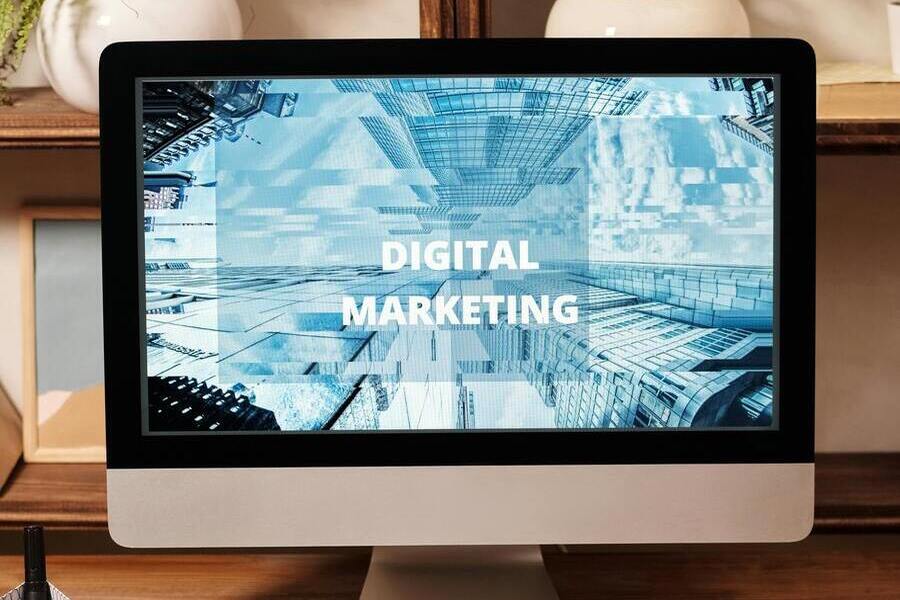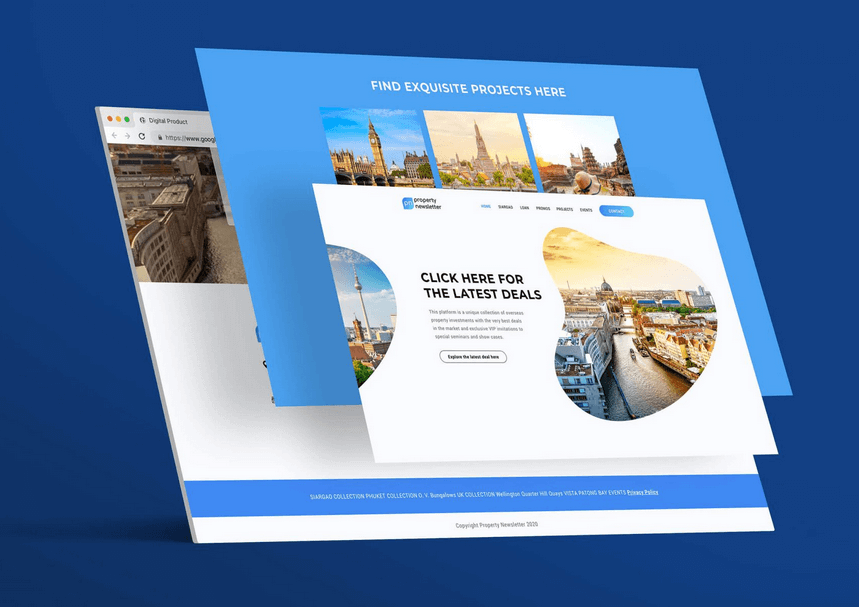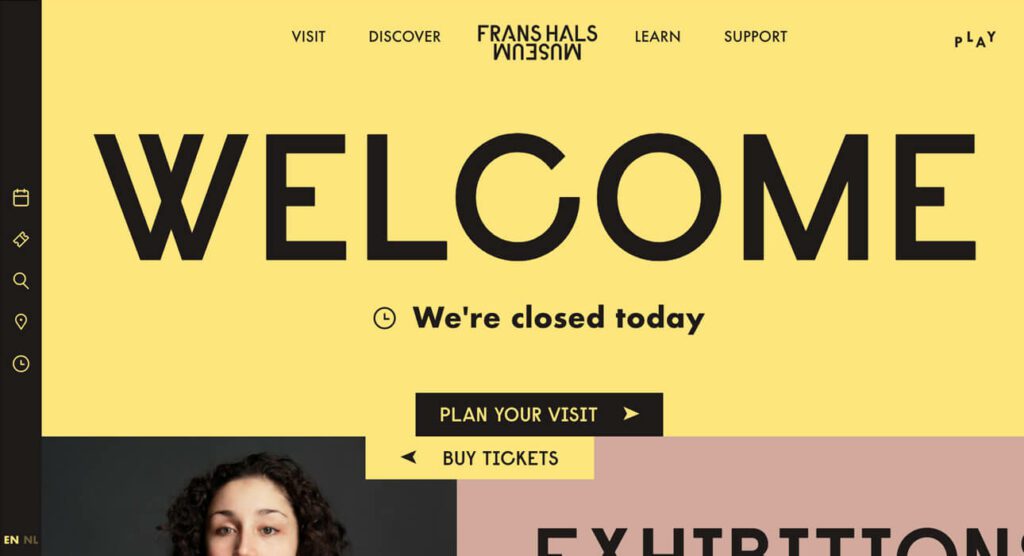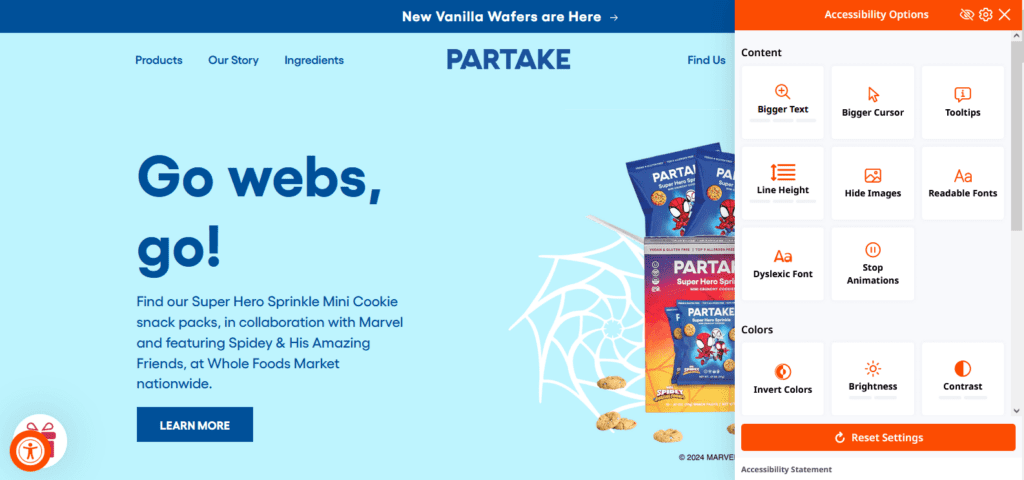The 7 Essential Digital Marketing Channels for Small Businesses
The life of a small business owner is so different today! There was a time when running a business meant days of flipping through phonebooks or a Rolodex filled with business cards and plastering flyers everywhere. But then the internet happened. And with it came the digital marketing channels that transform the way businesses connect with customers!
According to Statista, there were over 5.4 BILLION internet users in April 2024. That’s almost 67% of the total global population! With this in mind, imagine the reach you could have with the right digital strategy.

So, if you are thinking, “Can’t I stick with tried-and-true methods like flyers and billboards?”, sure, those can work. However, the digital world offers a whole new level of possibilities.
But hold on, with so many digital marketing channels out there, it’s easy to feel overwhelmed. Which ones are right for your small business, especially when you’re working with a tight budget? We’ll answer that today! This blog will break down the 7 essential digital marketing channels you should consider and how to leverage them effectively.
Ready to unlock the power of the internet for your business? Let’s go!
- Craft Your Online Story: Top Digital Marketing Channels for Small Businesses
- 1. Website – your digital storefront
- 2. Social media – to spark conversations and build communities
- 3. Email – to foster strong customer relationships & drive sales
- 4. SEO – to get found organically & drive traffic to your website
- 5. Paid advertising – to boost visibility and conversions
- 6. Content marketing – to attract, engage, and convert relevant leads
- 7. Influencer marketing – to highlight your brand’s authenticity
- Supercharge Your Digital Marketing Game With KIMP
Craft Your Online Story: Top Digital Marketing Channels for Small Businesses
1. Website – your digital storefront
When talking about digital marketing channels, your website is undoubtedly the cornerstone. Because it’s like a virtual storefront open to customers all over the world, open 24/7. Additionally, it’s one of the most effective channels to showcase your products/services and paint a memorable picture of your brand in the minds of potential customers.
A website is crucial to businesses in today’s digital age because it:
- Helps lay the foundation for your brand narrative.
- Provides customers with details about your offerings.
- Helps build brand awareness.
Now let’s talk about designing websites that actually serve their purpose!
Focus on user-friendliness. For instance, the Frans Hals Museum website excels in this area with its intuitive interactions, clear menus, and excellent readability. No wonder the website was recognized by Awwwards as one of the most user-friendly websites out there.
In today’s crowded online landscape, how do you make your website shine? Focus on the little details that offer big value, like accessibility features. The Partake Foods website exemplifies this with its accessible design and customizable features.
KIMP Tips:
For a quick summary with respect to websites:
- Use a clean and organized layout.
- Design menus and navigation bars that are easy to understand.
- Prioritize mobile optimization.
- Prioritize quick loading times for a positive user experience.
- Leverage visuals like images, carousel elements, and videos to keep the website interactive. Here’s an example of visually immersive website designs:

Need help with website design? Get a KIMP Graphics subscription!
2. Social media – to spark conversations and build communities
Social media has become one of the most important digital marketing channels given its dynamic nature and scope for engagement.
From reaching new leads to initiating conversations with existing leads and keeping existing customers engaged, social media is definitely one of the most versatile digital marketing channels for small businesses to invest in.
So, how do you tap into social media for your business growth? Let’s find out.
Don’t try to be everywhere. Focus on the platforms where your target audiences are. And then tailor your content strategy for each platform. For instance, a photography business should showcase work on Instagram but can leverage LinkedIn for recruitment.
Secondly, use social media as a space to establish your brand’s unique tone of voice thus humanizing it. For example, Dollar Shave Club maintains a fun and sassy tone on their Instagram page leveraging humor to engage their audience.
Finally, focus on creating a visually immersive experience for your users. This is a combination of a consistent theme or visual style, cohesive use of brand colors, clear and on-brand fonts, and catchy thumbnails. A good example here is the YouTube channel, “Kurzgesagt – In a Nutshell”. The channel is filled with informative content and it stands out with its quirky and vibrant illustrations.
KIMP Tips:
- Use on-brand visuals in diverse post formats like single-image posts, carousels, GIFs, short-form videos, and long videos.
- When using videos, ensure it’s well-edited and optimized for each platform’s specifications.
- Let your brand’s unique voice shine in your designs through the relevant use of visual styles. Here’s an example of using unique visual styles, like custom illustrations to let your brand voice shine.

3. Email – to foster strong customer relationships & drive sales
Email has proven to be a timeless digital marketing channel for small businesses to reach targeted audience segments. Moreover, email can be an effective way to foster a sense of loyalty in your customers and thus encourage repeat purchases.
In fact, email is one of the most effective digital marketing channels for generating and nurturing leads according to about 47% of marketers. What’s more, email marketing is also known for its impressive ROI. In conclusion, email is a powerful marketing tool that small businesses cannot ignore.
Now let’s answer the question: how do you make email marketing work for your business?
Firstly, identify the right types of emails for your small business based on your budget and current business goals.
Secondly, curate interactive content for your emails. After all, simple promotional emails are cliched – you encounter them all the time. So, you need content that pushes customers to click that button! Like the engaging email here from the popular beauty subscription service, Birchbox.
The third and most important point is personalization. Data shows that personalized emails have a 41% click-through rate! Take cues from Spotify, a pro when it comes to personalized messaging.
KIMP Tips:
- Use a purposeful layout based on a clear visual hierarchy to direct customers to the CTA.
- Stick with a limited color palette that does not overwhelm users. Here’s an example of effectively using a limited color palette that also preserves your brand identity:

4. SEO – to get found organically & drive traffic to your website
While other digital marketing channels are about breaking the ice and inviting new leads to explore your brand, there is one tool that helps reach customers exactly at the time and place they are looking for answers: SEO.
In essence, SEO (search engine optimization) is about tailoring your content to appear at the top of search results for relevant keywords that your target audience is searching for. Consequently, you drive more organic traffic and attract qualified leads as well.
So, how do you capitalize on SEO?
Firstly, focus on acing the keyword research game. You need to know the words and phrases that people use when searching for products and services you cater to. You can always use keyword research tools like Moz, Google Keyword Planner, Semrush, Ahrefs, and Backlinko.
The other important things to do in order to improve your SEO will be to come up with a robust backlink strategy, create high-quality informative content around the identified keywords, and on-page optimization.
KIMP Tips:
- The organization of information and overall layout of your website design also affects SEO. Hence focus on clear hierarchy and user-friendly navigation.
- Optimize the visuals on your website and include relevant alt text to tap into image SEO.
5. Paid advertising – to boost visibility and conversions
For targeted reach and visibility, paid advertising can be one of the most profitable digital marketing channels.
Unlike SEO, which focuses on organic reach, paid ads put your brand in front of a highly targeted audience who might not have otherwise found you. Therefore this helps drive increased website traffic and conversions.
For a more holistic approach to paid advertising, you need ads placed on search engines, social media platforms, websites, and other online channels.
Let’s move on to some tips for leveraging paid advertising on different platforms.
If it’s for Google Ads, you need thorough keyword research to craft a compelling copy for your ads. This ensures that your ads appear in relevant search results. Here’s a snapshot of some ads appearing at the top of the search results page on Google Search.

As for social media ads, you need engaging formats like images and videos to grab attention. And the visuals should tell a compelling story. Of course, you also need a compelling copy that clearly communicates the value proposition. The below ad from Microsoft does that effectively.

Finally, as for banner ads, they have limited space. Therefore keep your message brief and visually clear while also adding strong visuals and a clear CTA.

KIMP Tips:
- Besides keeping your ad visually interesting incorporate your brand elements seamlessly.
- In addition to the ad design itself, the design of the landing page where your ad directs users is crucial. It should be visually consistent with your ad design.
6. Content marketing – to attract, engage, and convert relevant leads
The right use of digital marketing channels will help you cut through the noise and deliver your message effectively. That’s precisely what content marketing is all about.
Content marketing is about curating content in various formats to educate and entertain your audience. It is about creating value for them before they take an action or make a purchase from you. Therefore content marketing can be a valuable tool in building trust and loyalty.
So, how do you capitalize on content to shine through the competition?
Understand your target audience to understand what types of content resonate best with them. Again, keyword research is a great place to begin with. Social listening is yet another tool to help you craft content that appeals to your audience.
Secondly, don’t stick to just one format. Instead, explore different content types for different platforms.
Finally, promote your content in the right places. Be it on website banners, or exit landing pages or even promoted posts on social media. For instance, HubSpot, a leading platform for CRM and digital marketing, leverages informative ebooks in various stages of marketing. You’ll find web banners and pop-ups directing attention to these ebooks.
KIMP Tips:
- Irrespective of the content format and channels, use visuals to complement text wherever possible. These could be in the form of illustrations, infographics or even simple icons that boost clarity and engagement.
- Ensure your content adheres to your brand guidelines in terms of tone, voice, and visual elements.
7. Influencer marketing – to highlight your brand’s authenticity
Influencer marketing is one of the most influential digital marketing channels that leverages the potential of online communities to boost a brand’s authenticity.
According to Ad Age, TikTok is the most popular influencer marketing channel with 56% of brands favoring it. Instagram, Facebook, YouTube, and Snapchat are the next on the list. Hence these are great platforms to start building your influencer campaigns.
Influencers are some of the best-trusted sources for customers looking for information before making a purchase. Furthermore, small businesses can also piggyback on the reach and trust that influencers have built to boost their brand image. Summing up, influencer marketing is one of the best investments a small business can make when exploring digital marketing channels for growth.
Now, for some tips to make influencer marketing work!
Instead of choosing influencers based merely on follower count, choose influencers who resonate with your target audience and with your brand values as well. For instance, Glossier collaborates with influencers known for their raw content that looks authentic and unstaged.
To make the most of influencer marketing, give the chosen influencer creative freedom. Here’s an execution by the popular meal kit company HelloFresh. In this example, they collaborated with popular influencer couple Ms Shi and Mr He often known to share Asian recipes in the form of fun videos. The content puts their style front and center while subtly plugging in the brand. This is what to aim for.
KIMP Tips:
- Create visuals that resonate with your brand and also the personal brand of the influencer.
- Short videos with a catchy story work much better than simple static images in most cases.
Supercharge Your Digital Marketing Game With KIMP
In summary, small businesses have a plethora of digital marketing channels to explore. From email marketing to social media and paid advertising, each offers a unique way to connect with your audience. And each of these digital marketing channels has its own quirks. But there is one unifying element across all these channels: the use of captivating visuals.
This is where KIMP comes in. With a dedicated design team working on your projects, you can effortlessly create visuals in various formats and for various platforms.
So, are you ready to upgrade your digital marketing game with stunning on-brand custom graphics that make your brand stand out? Register now for a free 7-day trial of KIMP!







